The power supply is the energy source of the chip and also the reference benchmark for the logical state. If the ripple and noise of the power supply are too large, it will cause a large amount of jitter on the rapidly changing logic signal, and then generate error codes (Note: Error codes refer to incorrect code elements, mistaking logic 1 for logic 0 or 0 for 1), affecting the performance of the chip and even causing the chip to fail to work properly. Random jitter and low-frequency periodic jitter, which are very important in high-speed signal verification, are introduced due to the noise and ripple of the power supply.

Figure 1: Power supply ripple and noise
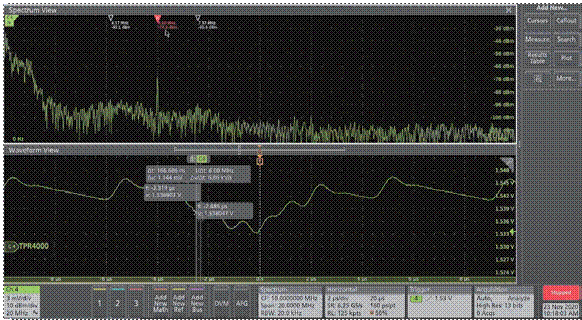
Figure 2: Frequency domain analysis of ripple
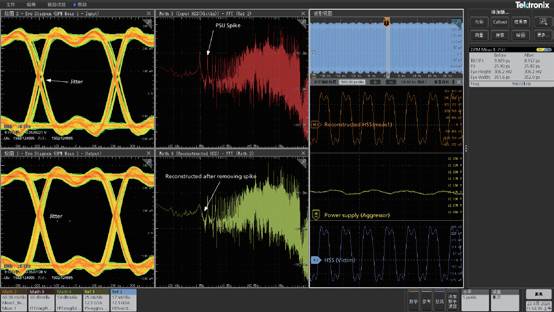
Figure 3: Simulation analysis tool for the Influence of Ripple on signal integrity
In terms of design, the computing power chips generally adopt the POL step-down method. The DC-DC transformer is placed as close as possible to the load end, which can effectively avoid the external interference introduced on the transmission link.
In terms of testing, higher-precision and lower-noise oscilloscopes, as well as dedicated power ripple probes, should be used to reduce the noise introduced by the measurement system, so as to measure power ripple and noise more accurately.
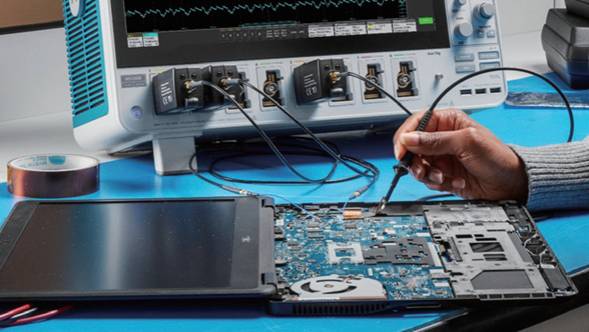
图4:使用MSO6B和TPR探头测试电源纹波

Figure 5: Comparison of background noise between the MSO6B oscilloscope and its competitors
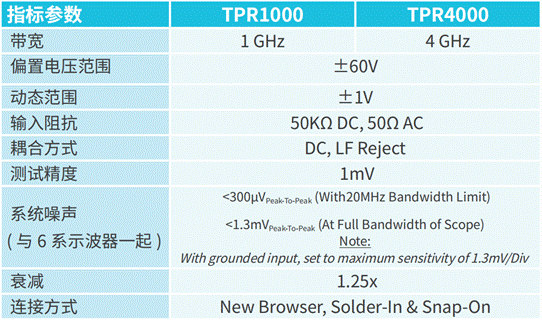
Figure 6: TPR probe indicators
Sharing of actual measurement cases
The switch in the data center serves as a bridge for the collaborative cooperation of computing power units and the construction of computing power networks. The switch we used for actual measurement has a core chip power supply of approximately 1V, and the specification requires that its noise peak-to-peak value be within 3mV.
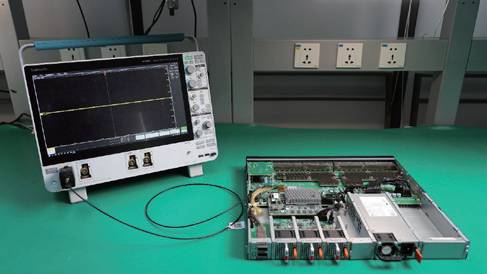

Summary
Today, with increasingly high requirements for power supply ripple and noise, the system floor noise introduced by oscilloscopes and probes cannot be ignored. The measurement results not meeting the standards may be due to the insufficient accuracy of the oscilloscope and probe, rather than the poor design of the object to be measured. With the Tektronix high-precision oscilloscope MSO6B and the dedicated power supply ripple probe TPR series, the instrument's bottom noise is as low as 300uV, making it possible to precisely measure the noise of low-voltage and high-precision power supplies. Learn more about MSO6B, https://www.tek.com.cn/products/oscilloscopes/6-series-mso.
Tektronix is headquartered in Beverly Hills, Oregon, USA. It is committed to providing innovative, precise and easy-to-operate test, measurement and monitoring solutions to solve various problems, unleash insights and drive innovation capabilities. For over 70 years, Tektronix has been at the forefront of the digital age.
免责声明: 本文章转自其它平台,并不代表本站观点及立场。若有侵权或异议,请联系我们删除。谢谢! Disclaimer: This article is reproduced from other platforms and does not represent the views or positions of this website. If there is any infringement or objection, please contact us to delete it. thank you! |


